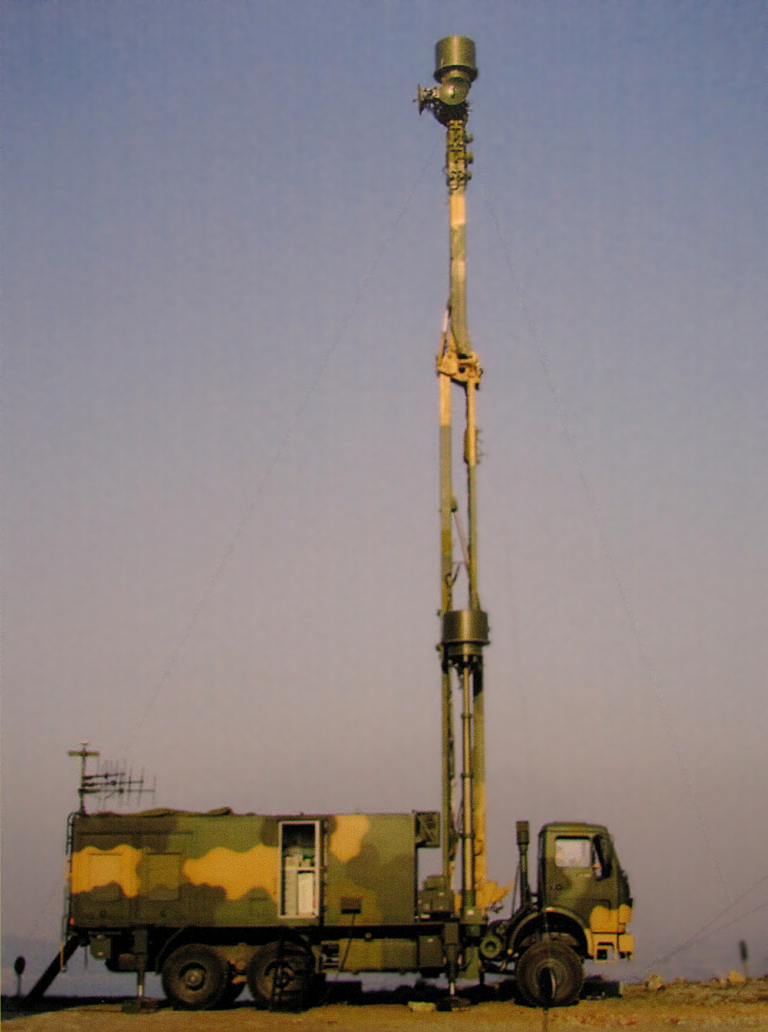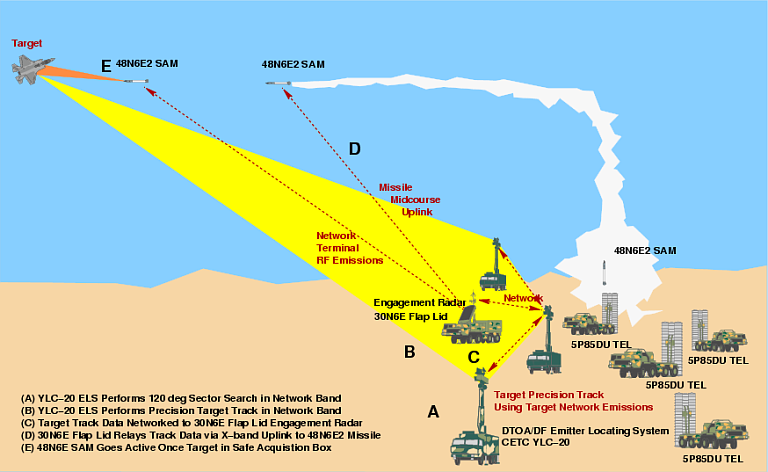| Media claims Beijing has developed radars that can detect stealth aircraft |
 |
| DWL002 Passive Detection System |
 |
| DWL002 CONOPS diagram. (Air Power Australia) |
 |
| YLC-20 or Kolchuga M with its S-300PMU/PMU1/PMU2 SAM batteries |
Chinese sources claim that the DWL002 passive radar system will render the F-22 and F-35 “obsolete.”
According to recent reports in the Chinese media, China is betting that its new DWL002 passive detection radar system will grant its armed forces a massive boost in countering the United States’ advanced stealth fighters. According to a report in Defense News, Chinese sources claim that the radar will render systems like the advanced F-22 fighter and the upcoming F-35 “obsolete” — a strong claim to be sure.
The DWL002 came to light in recent years and has been pitched by Chinese sources repeatedly as a credible counter to conventional stealth military aviation. The DWL002 is an emitter locating system (ELS) which partially iterates on innovations found in older Russian designs, including the KRTP Tamara series and ERA Vera-E. The DWL002 is a more advanced ELS compared to China’s YLC-20 system (which is itself based on the KRTP-91 Tamara). The United States and other Western European countries have abandoned the use and development of passive-detection radar systems, citing poor accuracy. China and Russia continue to use the systems. The DWL002 itself will have a likely range of around 400-500 kilometers and is comprised of three stations that operate in tandem, placed kilometers apart. According to Defense News, the DWL002′s range would allow it “cover all of Taiwan and the disputed Senkaku Islands in the East China Sea, but [it] is not within range of U.S. military bases on Okinawa. Nor can it reach the Philippines.”
The DWL002, if it lives up to its touted capabilities, would severely hamper stealth fighter-based attempts at establishing aerial control over Chinese territory provided Chinese air defense systems are operational. Anti-stealth radar technology would play an important role in allowing the Chinese People’s Liberation Army (PLA) to effectively counter parts of the United States AirSea Battle operational concept, for example. Part of the effectiveness of AirSea Battle relies on the U.S. Air Force and Navy deploying long-range stealth-based air platforms. With the DWL002 ESL, Chinese air defense systems would be significantly more effective at detecting hostile stealth aircraft. Another feature of the DWL002 that has drawn some attention from the Chinese media — notably the Global Times, according to WantChinaTimes – is its ability to track aircraft without notifying pilots that they have been detected by radar. Furthermore, according toVassily Kashin, senior research fellow at the Center for Analysis of Strategies and Technologies, a Moscow-based think tank, the DWL002′s capabilities are not being exaggerated and pose a serious threat to stealth platforms.
Other sources are less convinced of the DWL002′s actual capabilities. According to a technical report by Air Power Australia, an independent defense think tank, the key innovation that sets the DWL002 apart from its other ELS predecessors is its use of “paired primary wideband apertures, displaced in elevation.” Based on the report, this seems to be extent of the DWL002′s capacity to impress. That report further emphasizes the DWL002′s height-finding capabilities more so than its explicit anti-stealth capabilities. The Air Power Australia report is widely skeptical of claims that the DWL002 and other variants on Soviet-era passive detection systems are technically capable of what is often touted, i.e. China hasn’t “solved” anti-stealth just yet. In general, however, passive detection radar systems will likely benefit from the increasingly signal-heavy nature of U.S. military aviation technologies — the systems work by constantly listening for and detecting electronic emissions. U.S. fighters — especially the upcoming F-35 — could have incoming and outgoing signal traffic detected by this system (although the more data-heavy Multi Function Advanced Datalink runs only when the aircraft is in low observable stealth mode).
Overall, the DWL002 is likely less of a threat to contemporary U.S. stealth aviation than recent reports would suggest. In the meantime, it should be noted that China isn’t putting all its eggs in the anti-stealth technology basket. In addition to defensive investments in anti-stealth, China has long been proactive about developing its own stealth aircraft. Recently, a full-scale model of China’s Shenyang J-31 stealth multirole fighter appeared on a PLAN carrier mock-up, prompting speculation that China is looking to deploy its own stealth jets at sea. Additionally, the Chengdu-20, a stealth air superiority fighter, is also under development and is expected to be operational later this decade.

Post a Comment Blogger Facebook Disqus